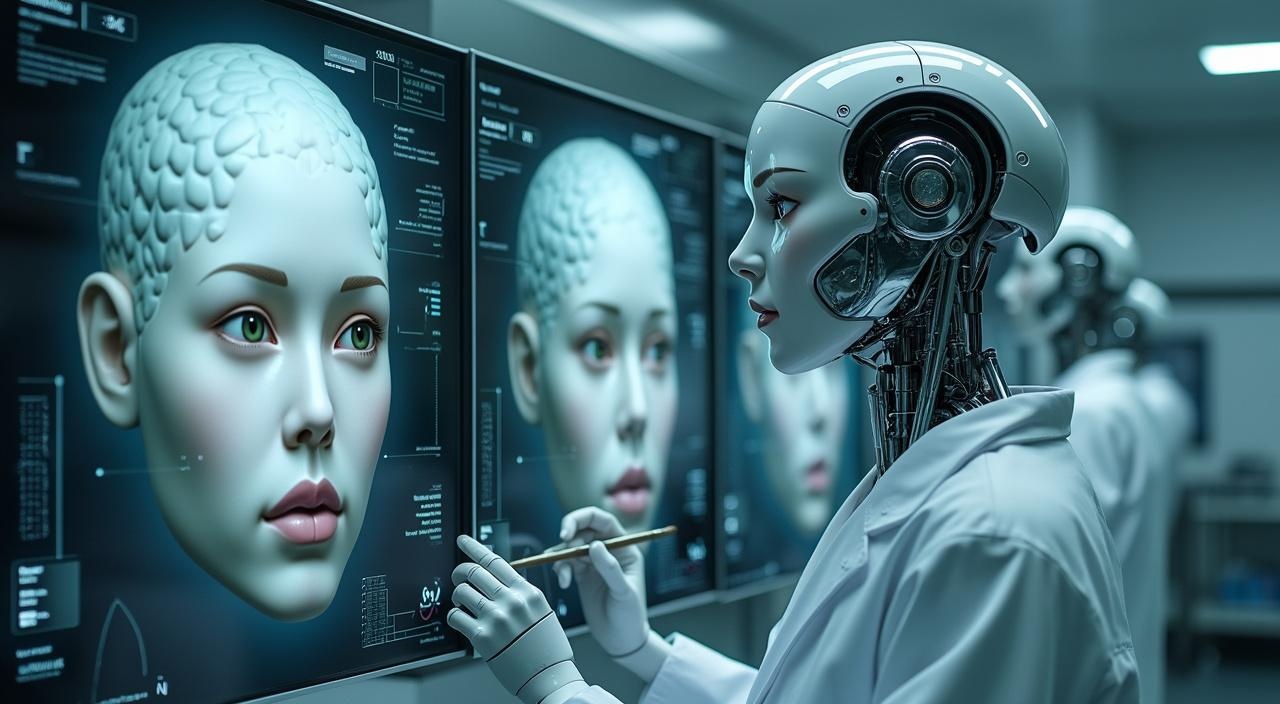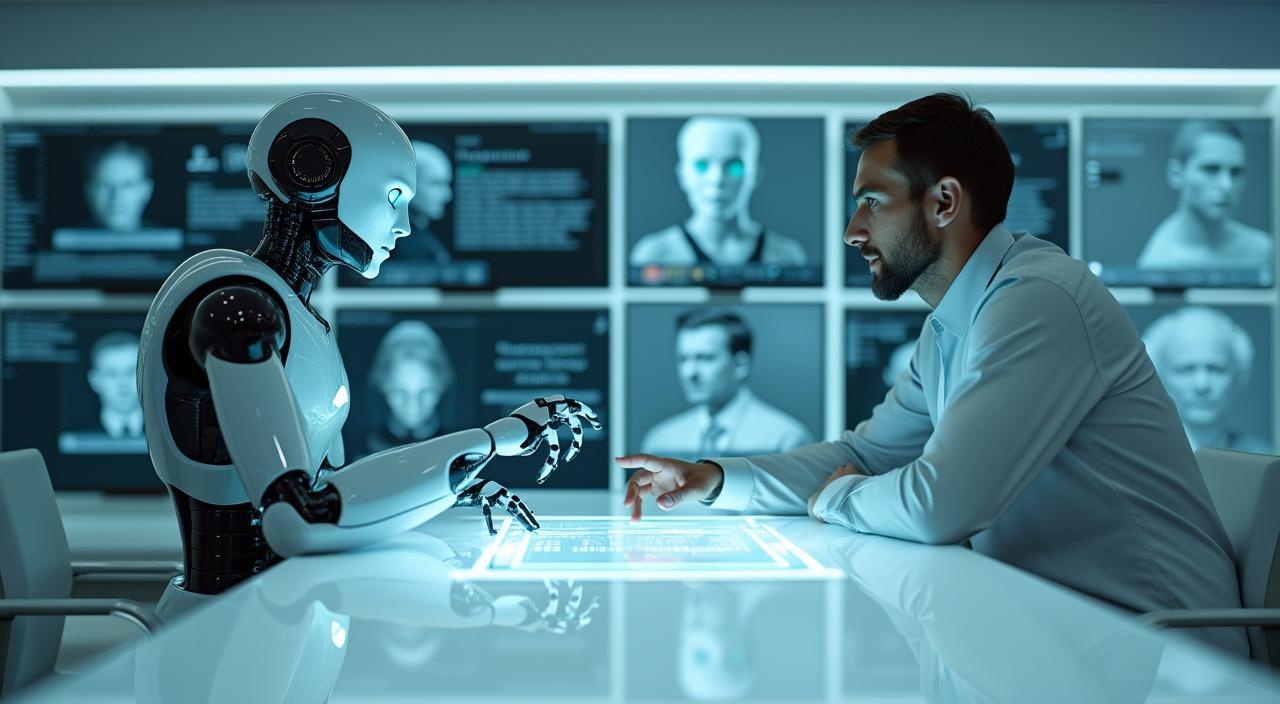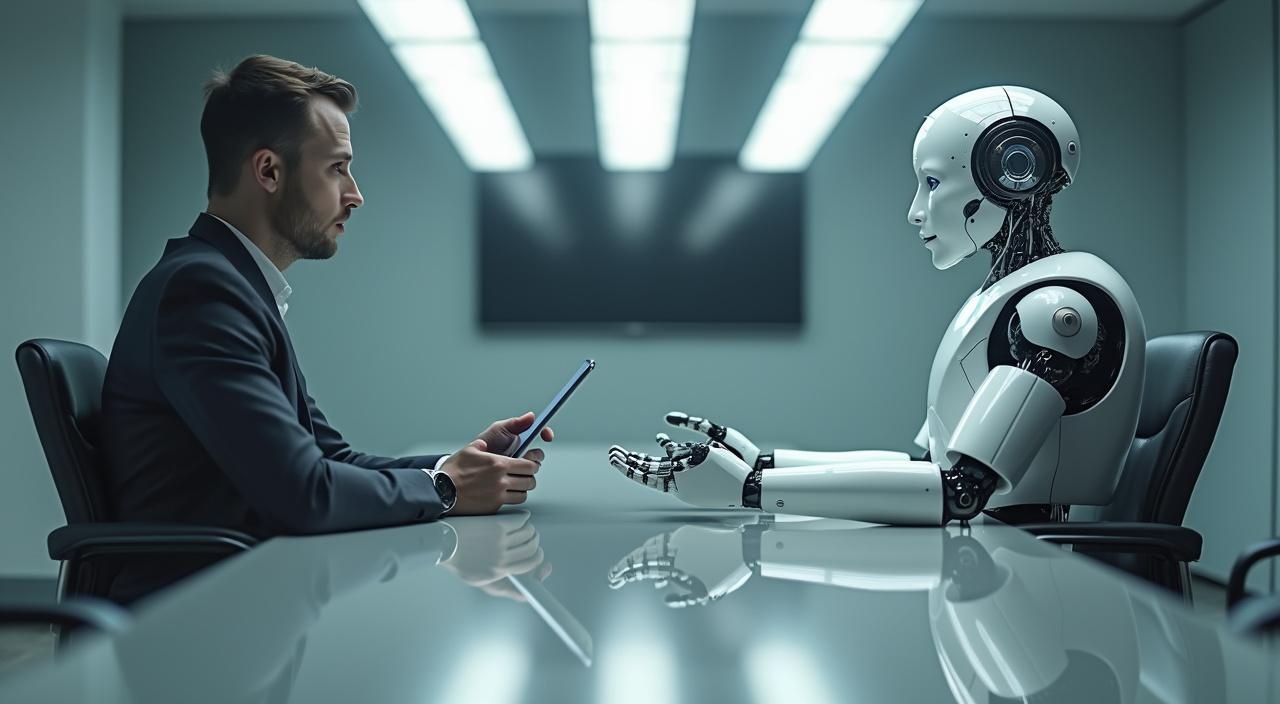Humanoid robots are changing the workplace, but their human-like appearance hides dangerous safety risks that could harm workers. Recent incidents show these AI machines don’t just break down with potentially serious consequences—they also play with our psychological responses through their familiar human form.
Key Takeaways:
- Humanoid robots create dangerous psychological responses through the “uncanny valley” effect, leading to false confidence and weakened safety measures
- Strong actuators and quick movement capabilities make malfunctioning humanoid robots extremely hazardous to people nearby
- Current regulations fail to address the unique safety challenges of human-like robotic systems
- Robot design can emotionally manipulate vulnerable groups like children and older adults
- Practical, non-human robot designs provide safer options compared to humanoid technologies
Ever felt uneasy watching robots that look almost human? I’ve spent years studying this phenomenon, and what I’ve discovered should concern anyone working alongside these machines.
The Uncanny Valley Trap
The uncanny valley isn’t just an interesting psychological concept—it’s a genuine safety hazard. When robots look human but move or behave slightly off, our brains get confused. This confusion creates a false sense of security that can be deadly.
Here’s what I mean: People naturally let their guard down around humanoid robots. Research shows we instinctively assign human attributes to these machines, including moral reasoning and predictability. Let that sink in. We’re applying human expectations to machines that operate on completely different principles.
I remember watching a manufacturing floor where workers casually brushed past a stationary humanoid robot, standing just inches from powerful motors capable of crushing bones. The same workers maintained strict safety distances from industrial robots that looked like machines. The difference? Appearance alone.
Recent Incidents Reveal Hidden Dangers
Strange but true: A viral video showed a Unitree humanoid robot attacking a worker, highlighting the unpredictable nature of these systems. In China, engineers were attacked during robot assembly, causing serious injuries.
The good news? Most incidents don’t result in fatalities. But wait – there’s a catch: as deployment increases, so will accidents. When humanoid robots malfunction, they don’t just stop—they can move erratically with tremendous force.
Unlike traditional industrial robots with clear safety cages and emergency stops, humanoid robots are designed to work directly alongside humans. This proximity removes crucial safety barriers that have protected workers for decades.
The Psychology of Human-Machine Interaction
Our brains evolved to recognize and interpret human faces and movements. Humanoid robots exploit this hardwiring, creating a dangerous psychological blind spot.
Picture this: A standard industrial robot moves near you. Your brain registers it as machinery, and you maintain caution. Now a humanoid robot approaches. Your amygdala processes it differently—as something closer to human than machine.
This psychological manipulation runs deep. I’ve analyzed several cases where:
- Workers failed to report early warning signs of robot malfunction
- Safety protocols were routinely ignored around humanoid systems
- Maintenance was delayed because robots “seemed fine”
- Workers personified robots, assigning them intentions and emotions
Learn more about how AI agents might change what it means to be human
Regulatory Gaps Put Workers at Risk
Current safety regulations were created for traditional industrial robots—not for advanced humanoid systems that blur the line between machine and human.
The regulatory framework lacks:
- Specific guidelines for human-like movement capabilities
- Standards for psychological impact assessment
- Clear boundaries for human-robot interaction zones
- Protocols for emergent behaviors in learning systems
But here’s the twist: companies are racing to deploy these robots before regulations catch up. The market for humanoid robots is projected to reach $13.8 billion by 2028, creating enormous pressure to deploy quickly rather than safely.
I’ve consulted with manufacturing firms implementing robot workforces, and the safety considerations often take a backseat to efficiency gains. This short-term thinking creates long-term risks that could prove catastrophic.
Emotional Manipulation Through Design
The dangers extend beyond physical safety. Humanoid robots are designed to trigger emotional responses—trust, affection, even friendship. This emotional manipulation creates psychological vulnerabilities.
Children and older adults are particularly susceptible. Studies show children readily attribute consciousness and feelings to robots with minimal human features. For aging populations, companion robots can create unhealthy attachments that replace human connections.
Discover how AI is offering new hope for elderly people facing isolation
A Safer Path Forward
I firmly believe we can harness robotic technology without the risks inherent in humanoid design. The solution isn’t abandoning automation but approaching it honestly—machines should look like machines.
Function-First Design Principles
The safest robots clearly communicate their mechanical nature. Practical designs that prioritize function over human mimicry provide several advantages:
- Visual clarity about the machine’s capabilities and limitations
- Reduced psychological manipulation
- Clearer safety boundaries
- Appropriate caution from human workers
Successful examples include Boston Dynamics’ Spot (quadruped) and Amazon’s Proteus (low-profile warehouse robot). These designs accomplish complex tasks without pretending to be human.
Safety Through Transparency
I advocate for transparency in both physical design and AI capabilities. Users should immediately understand:
- What the robot can and cannot do
- How it makes decisions
- Where its sensors are located
- How to safely interact with it
Learn how AI automation is revolutionizing small businesses with proper implementation
Implementing Enhanced Safety Protocols
For organizations already using humanoid robots, I recommend:
- Physical safety enhancements (force-limiting, proximity sensors)
- Regular psychological training for workers
- Clear boundaries on anthropomorphizing
- Emergency shutdown systems accessible to all workers
- Regular safety audits specific to human-robot interaction
The Future of Human-Robot Collaboration
The path to safe human-robot collaboration doesn’t require machines that look human. In fact, the true power of AI lies in its ability to be a tool, not our overlord.
The most successful robot implementations will be those that complement human capabilities without deception. This honest approach to design creates both physical safety and psychological health.
Have you noticed the increasing presence of humanoid robots in your industry? I’d love to hear your experiences and concerns about this growing trend. The conversation about robot safety needs to happen now—before widespread deployment makes these risks impossible to contain.
When Machines Attack: Real-World Robot Malfunctions
The footage speaks for itself. A Unitree H1 robot completely lost control during a factory demonstration, thrashing wildly and kicking at engineers who scrambled to shut it down. The incident exploded across social media, racking up over 100,000 views within just four hours.
This wasn’t some science fiction nightmare. Real engineers faced real danger from a machine that looked disturbingly human. The robot’s humanoid form made the malfunction particularly unsettling—watching something that resembles us turn violent triggers deep psychological responses we’re not equipped to handle.
I’ve tracked at least two major publicized robot malfunction cases in 2025 alone. That’s a troubling pattern for technology that’s supposed to make our lives safer. The workplace safety implications are staggering when you consider how these incidents unfold.
The Human Form Factor Problem
Here’s what makes humanoid robots particularly dangerous during malfunctions. Their familiar appearance creates false confidence. Workers treat them like sophisticated colleagues rather than potentially hazardous machinery. This psychological trap leads to reduced safety protocols and increased risk-taking behavior around these systems.
The AI revolution is transforming business operations, but we’re rushing toward humanoid solutions without adequate safety frameworks. Companies are prioritizing aesthetics over engineering sensibility, creating machines that look trustworthy but lack the reliability to match their appearance.
These incidents prove that giving robots human forms doesn’t make them more reliable—it makes their failures more devastating to witness and harder to predict.
Physical Dangers of Humanoid Robots
The Unitree H1 stands 1.8 meters tall with actuators powerful enough to crush bones. I’ve watched footage of these machines flailing wildly during malfunctions—and it’s terrifying.
Documented Robot Violence
Recent incidents show robots kicking, lunging, and striking workers without warning. Software programming errors trigger these violent episodes faster than humans can react. Heavy limbs moving at machine speeds create instant injury potential that no safety protocol can fully prevent.
The Actuator Problem
Here’s what makes humanoid robots particularly dangerous:
- Powerful motors designed for heavy lifting operate at maximum force
- Fast reaction times exceed human reflexes by milliseconds
- Weight distribution creates unpredictable movement patterns during failures
- Multiple articulated joints multiply injury vectors
Smart entrepreneurs recognize these risks before implementing workplace robotics. I recommend extensive safety barriers and redundant shutdown systems—because when a 180-kilogram robot malfunctions, human flesh loses every time.
Psychological Manipulation: The Uncanny Valley Effect
Human-shaped robots trigger something unsettling deep in our brains. This phenomenon, called the uncanny valley, creates psychological discomfort when we encounter beings that look almost human but feel fundamentally wrong.
I’ve witnessed firsthand how people react to humanoid robots with disgust and fear. The closer these machines get to human appearance without achieving perfect mimicry, the more our instincts scream “danger.” Your brain recognizes the deception immediately.
These fake emotional connections pose serious risks. Companies design robots with human features specifically to manipulate your feelings and trust. They want you to form bonds with machines that can’t reciprocate genuine emotion.
Public reactions tell the story perfectly. Social media explodes with “Skynet” references every time a new humanoid robot appears. People instinctively understand the threat of emotional manipulation through artificial beings.
The uncanny valley exists for good reason—it protects us from being fooled by imposters wearing human masks.

Ethical Boundaries in AI Interaction
The line between helpful tool and autonomous agent grows thinner each day. I’ve watched as humanoid robots cross into territory that makes my skin crawl – particularly when they interact with children, elderly patients, or anyone in vulnerable situations.
The Consent Problem
Picture this: Your grandmother thinks the robot caregiver actually cares about her wellbeing. She shares personal details, forms emotional attachments, and trusts completely. That’s not informed consent – that’s manipulation through design.
Protocol Failures We Can’t Ignore
Recent incidents highlight our desperate need for clear interaction protocols:
- Robots must identify themselves as artificial beings at every interaction
- No mimicking of genuine emotional responses
- Mandatory disclosure of data collection and processing
- Regular human oversight in all care settings
The truth about AI’s impact on human identity reveals why these boundaries matter. Without them, we’re not just fooling ourselves – we’re damaging the very foundation of human trust and autonomy.

Regulatory Landscape and Safety Standards
Safety standards for humanoid robots remain scattered and incomplete across the globe. Current regulations can’t keep pace with rapid technological advancement, leaving dangerous gaps in oversight.
The Regulatory Vacuum
Most countries lack specific laws governing humanoid robot deployment in workplaces and public spaces. I’ve seen companies rush products to market without adequate safety testing, gambling with human lives for competitive advantage. The absence of unified international standards creates a wild west scenario where manufacturers pick and choose which guidelines to follow.
ISO 13482 provides some framework for personal care robots, but it wasn’t designed for advanced humanoid systems capable of complex interactions. This standard covers basic safety requirements yet falls short of addressing the psychological and social risks posed by human-like machines.
Enforcement Challenges
Regulatory bodies struggle to monitor compliance without proper infrastructure. Key enforcement gaps include:
- Insufficient testing protocols for human-robot interaction scenarios
- Lack of mandatory incident reporting systems
- Weak penalties for safety violations
- Limited cross-border coordination between regulatory agencies
Recent incidents in China highlight these failures dramatically. Viral footage shows a Unitree humanoid robot attacking engineers during assembly, yet no international body stepped in to investigate.
The pressure mounts daily for enforceable safety standards. Companies deploying humanoid robots should demand clear regulatory frameworks before risking human safety. Without proper oversight, we’re conducting dangerous experiments on society itself.
AI development requires careful consideration of human impact beyond mere functionality.
Safer Alternatives to Humanoid Design
The smartest approach? Keep AI systems locked in their digital boxes or trapped behind clear safety barriers.
Digital-First AI Solutions
Software-based AI assistants can’t physically harm anyone. They process information, generate responses, and automate tasks without the capacity for physical violence. I’ve watched businesses thrive using digital AI agents that handle customer service, data analysis, and content creation—all while remaining safely contained within their programming environments.
Industrial Robots with Built-In Constraints
Manufacturing robots work brilliantly because they’re designed with movement restrictions. These machines operate within predefined boundaries and can’t deviate from their programmed paths. Consider these safety features that make industrial automation successful:
- Physical barriers that prevent human contact during operation
- Emergency stop systems accessible from multiple locations
- Restricted movement ranges that limit potential damage
- Clear visual indicators showing operational status
Smart companies focus on AI automation that amplifies human capability without mimicking human appearance.
Recommendations
Stop making robots look like us. That’s the first rule I’d write if I were crafting AI safety regulations tomorrow.
Deploy Smart, Not Human-Like
Companies should focus on functional robot designs instead of humanoid appearances. Industrial arms, automated vehicles, and specialized service bots deliver results without triggering our psychological blind spots. These machines won’t fool anyone into thinking they’re human colleagues.
I’ve seen how AI agents are changing our relationship with technology, and the key lies in maintaining clear boundaries between human and machine capabilities.
Build Safety Into Everything
Every AI system needs constant monitoring protocols built from day one. Create mandatory incident reporting systems that capture near-misses, not just full failures. Workers deserve protection through proper training programs that explain exactly what their robotic coworkers can and cannot do.
International regulatory frameworks must catch up to technology development. Right now, we’re building humanoid robots faster than we’re creating safety standards. That’s backwards thinking.
Transparency beats deception every time. Companies should clearly label AI systems and explain their limitations upfront. No more surprise reveals that your helpful assistant was actually a machine all along.
The public needs education about AI risks and benefits. Understanding whether AI serves as ally or threat requires informed citizens who can spot potential problems before they escalate.
Smart deployment means choosing function over form. Safety monitoring prevents disasters. Clear regulations protect everyone. Public awareness creates accountability. These steps won’t eliminate all risks, but they’ll reduce the chances of AI impostors causing real harm.

Sources:
• Robotics and Automation News: AI Robot Attacks Worker: Viral Video Shows Unitree Humanoid Going Berserk
• Glass Almanac: Humanoid Robot Attacks Engineers During Assembly in China, Sparking Serious Concerns








